The Relative Merits of Black Rifle Evolution

The original 1956-era AR-10 demonstrates the rudiments of the eventual definitive design.
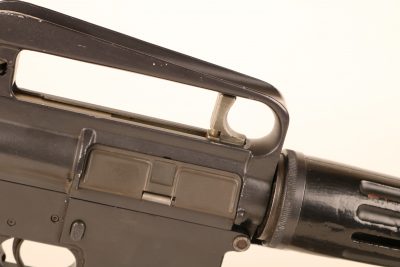
The original ArmaLite AR-10 had its charging handle as a trigger of sorts nestled within the charging handle.
ArmaLite began as a tiny little division of Fairchild Engine and Airplane Corporation in the early 1950s. Fairchild built a variety of trainer and transport aircraft during and after World War II. Their most recognizable creation was the 1970s-era A10 Warthog ground attack fighter.
Gene Stoner was the chief bottle washer at ArmaLite, and their mandate was to contrive the most technologically advanced military firearms designs on the planet. With a modest team of engineers, a few resources, and a remarkable excess of vision, these guys first strived to apply cutting-edge aviation technology to the development of small arms. Their efforts changed the way the world makes guns.
At the time the world’s proper Infantry weapons were all forged steel and oiled walnut. By contrast, the ArmaLite AR-10, itself the 7.62×51 mm precursor to the AR15, was built from aircraft aluminum and phenolic polymers. The gun’s earliest barrels were even made from thin steel sleeves embedded within an aluminum tube. After one of these rigs exploded brilliantly during a military demonstration the ArmaLite guys went back to more conventional steel barrels.

In the round polymer forearm and triangular front sight base of the AR-10, we see the beginnings of the M16.
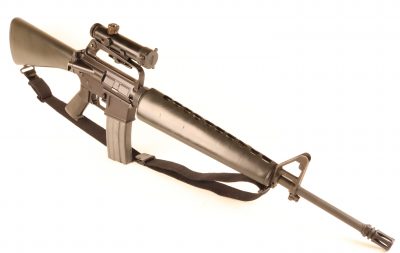
The M16A1 was the definitive model of the M16 used by the US military during the late 1960s, 70s, and 80s.
The extraordinary lines of those early black rifles were legitimately unlike anything else in the world. We are today jaded to polymer furniture, inline buttstocks, and aluminum gun parts. In 1956, however, this was heady stuff indeed. To a generation raised on Saturday afternoon Buck Rogers serials, the AR15 was science fiction incarnate. Despite some early challenges, the M16 went on to become the longest-serving military rifle in American history.
The direct gas impingement system that defined Stoner’s lightweight new rifle was drawn from the WWII-era Swedish Ljungman Automatgevär AG42 rifle. The machined aluminum receivers mimic aircraft structural components. The polymer pieces had their origins in the synthetic Bakelite of WWII.
Stoner designed the 5.56×45 mm round the AR15 fired using a modified .222 sporting cartridge as a foundation. The resulting rifle was radical to its core. American industry was capable of building such a high tech gun. Most of the rest of the world was not. Now hold that thought.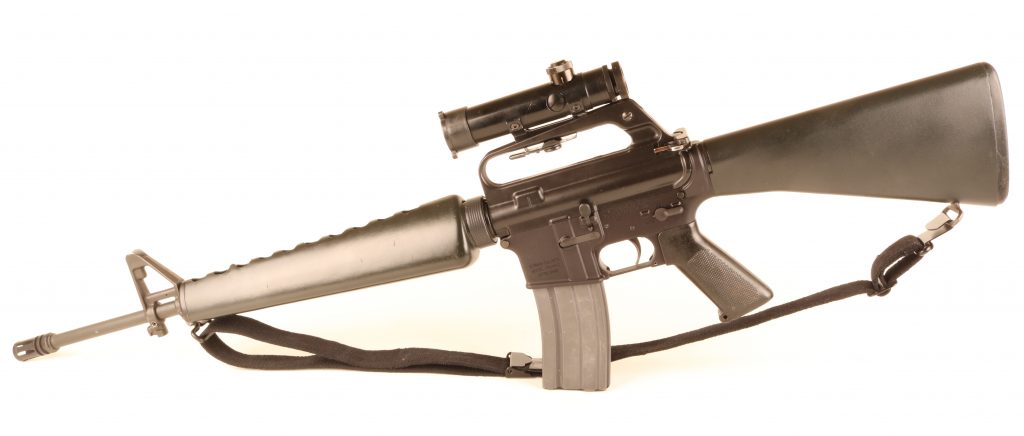
Morphological Details

The familiar T-shaped charging handle had its debut in the 5.56mm AR15.
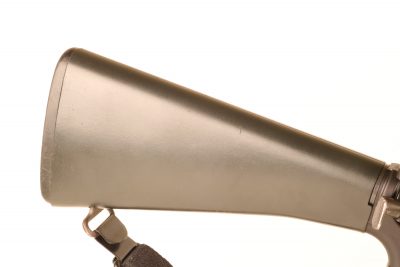
The polymer buttstock on the M16A1 was very similar to that of the AR-10 only smaller.
The AR-10 was the grandfather. In its odd space-age architecture, one can divine the rudiments of the definitive model yet to come. The plastic furniture bears a similarity to that of the later AR-15, while the iconic carrying handle and triangular front sight base begin to take form. The charging handle on those early guns was a trigger-looking appendage that slid within the carrying handle rather than today’s more familiar T-shaped apparatus.
The standardized M16A1 had evolved significantly by the time it was serving in the torrid jungles of Vietnam. The slick black triangular handguns sported cooling holes aplenty along with stamped heat shields to help keep them comfortable at high round counts. The sling attachment point was on the absolute wrong side of the buttstock for tactical employment but was rendered as a rigid appendage on the A1 model. This did little to make the gun easy to tote but did produce a nasty hand-to-hand weapon should some unfortunate American dogface ever have to resort to the art of the butt stroke.

The M16A1

The recoil system telescoped into the buttstock such that the gun produced an audible twang with each round fired. Many’s the sweltering day I spent sweating on a military firing range as that buffer assembly cycled mere millimeters from my face. The overall experience was a visceral thing for a young soldier just getting comfortable in his uniform.
Despite the success of the M16, ArmaLite never planned on producing weapons. They were a think tank of sorts whose mission it was to design new guns and then farm them out for production under license. This was the reason most of those early ArmaLite rifles ended up with Colt’s prancing pony on the mag well. When the cash cow that was the AR rifle had been sucked dry it was time to build something new.
Generations

The M16A1
The M16 was a truly revolutionary rifle design. However, building one required the capacity to forge and machine aluminum to tight tolerances, draw stainless steel tubing, and manipulate parts in the same manner as the flourishing aerospace industry. In an effort at producing a rifle that was a bit easier to build in nations that perhaps lacked the technological wherewithal of the United States, Gene and his pals went back to the drawing board.
The next generation was actually called the AR-16. It fired 7.62x51mm, just like the original AR-10. The AR-16 massaged some of the high tech aspects of the previous design to allow the rifle to be built in simpler spaces. The AR-16 forewent the complicated forged receivers of the M16 in favor of simplified stamped steel versions.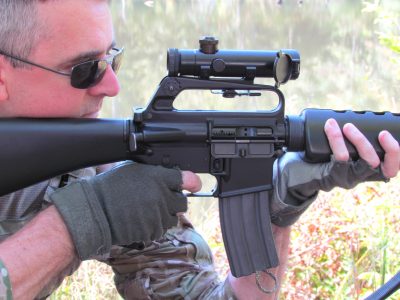
The Nazis showed the world exactly what advanced mass production techniques could do when they were unleashed upon small arms production. The MP40 submachine gun was the first example of a truly mass produced handheld automatic weapon. The MP44 could be churned out en masse by semi-skilled workers and might have changed the course of the war had it showed up a little earlier. The AR-16 was a variation on this theme.
In the process of this rethink, Mr. Stoner dispensed with the controversial direct gas impingement system of the M16 in favor of a more conventional gas piston design. American troops died in combat in Vietnam when the M16 rifles they were issued failed in the fetid filth of the Southwest Asian jungles. The elegant direct gas impingement design spilled scads of crud back into the rifle’s guts and was fairly maintenance-intensive as a result. The gas piston on the AR-16 was intended to remedy that.
Mr. Stoner left ArmaLite soon thereafter. As a result, the AR-16 died a natural death. However, another engineer named Arthur Miller designed a scaled-down 5.56×45 mm version called the AR-180 that was a piece of work indeed.
Technical Specifications
AR-180 M16A1
Caliber 5.56x45mm 5.56x45mm
Barrel Length 18.25 in 20 in
Overall Length 38 in (Extended) 39.5 in
Weight 6.7 lbs 6.35
Action Short-stroke piston Direct Impingement
Magazine Capacity 20/30/40 20/30/40
Differences
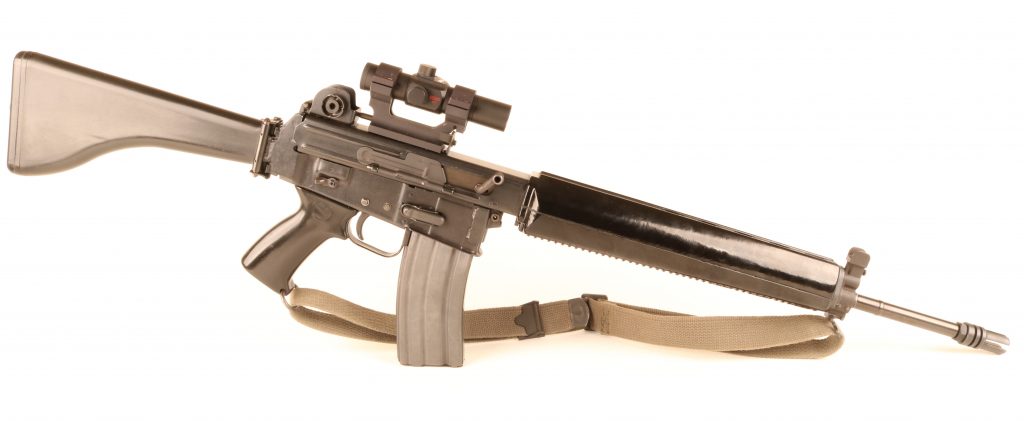
The ArmaLite AR-180 was designed after the M16 and was intended to be both more reliable and easier to produce.
The AR-180 was the semiauto civilian version of the selective fire AR-18 combat rifle. This gun was produced variously in England, California and Japan during the course of its production run. Most American enthusiasts got their introduction to the gun in the hands of Arnold Schwarzenegger’s cyborg in the first Terminator movie.
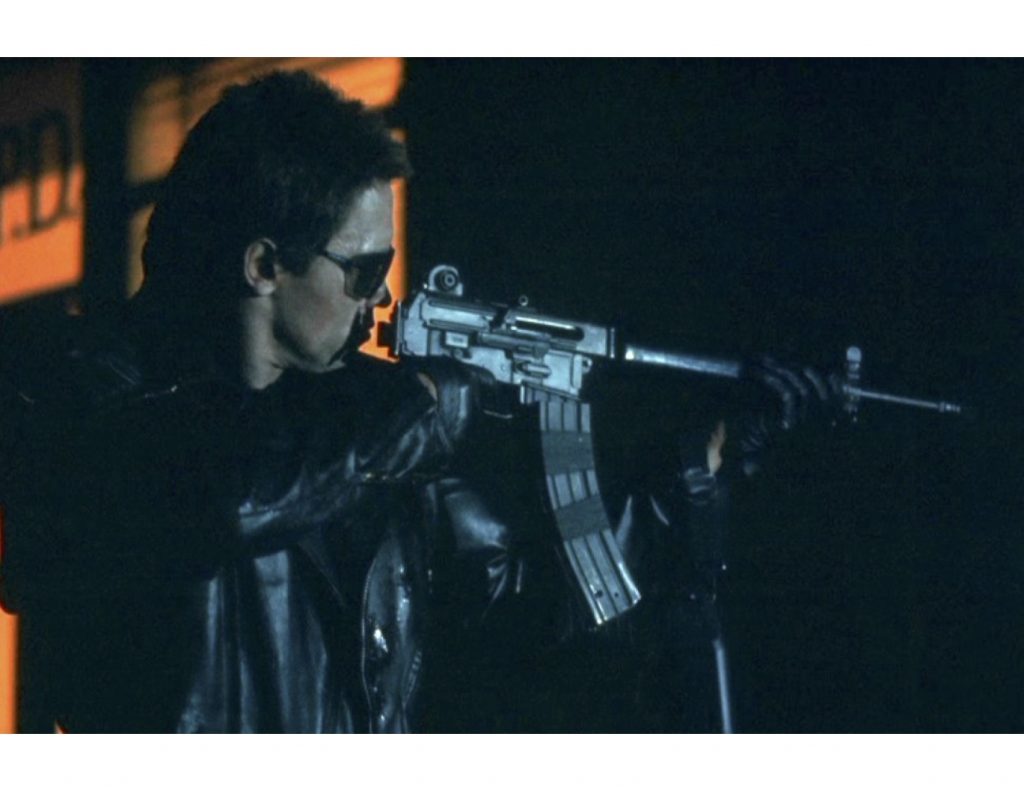
Many Americans’ first introduction to the ArmaLite AR-180 was by watching the James Cameron science fiction classic Terminator. The movie still purchased from Moviestillsdb.com for editorial use.
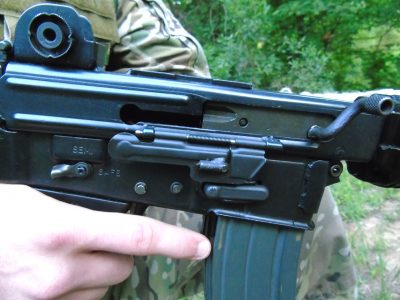
The receivers of the AR180 were pressed out of sheet steel for ease of production. The rigid charging handle reciprocated with the bolt.
Where the M16 sports a complicated T-shaped charging handle that effectively seals the action against most battlefield grime, the AR-180 uses a rigid reciprocating appendage. This simplified implement means that the operator can just grab the bolt and muscle it around in the event of a stoppage, so there is no need for a mechanical forward assist. The recoil system on the AR-180 is in the forearm, so the buttstock is free to fold to the side. The magazine releases on both guns are philosophically different yet mechanically similar.
The rear sight on the AR-180 is easily adjustable without a tool, while that of the M16 requires the point of a bullet. The front sights on both guns are nicely fenced and similarly adjustable for elevation with any sharp implement. The selector on the AR-180 is stamped but is in the same spot and works the same way as that of the M16.
Both the AR-180 and M16A1 use the same magazines with a caveat. The magazine release of the AR-180 grabs the magazine via a thin slot not typically present on most M16 boxes. A steady hand with a Dremel tool and a cutoff wheel will convert an M16 mag to AR-180 standards in maybe five minutes.
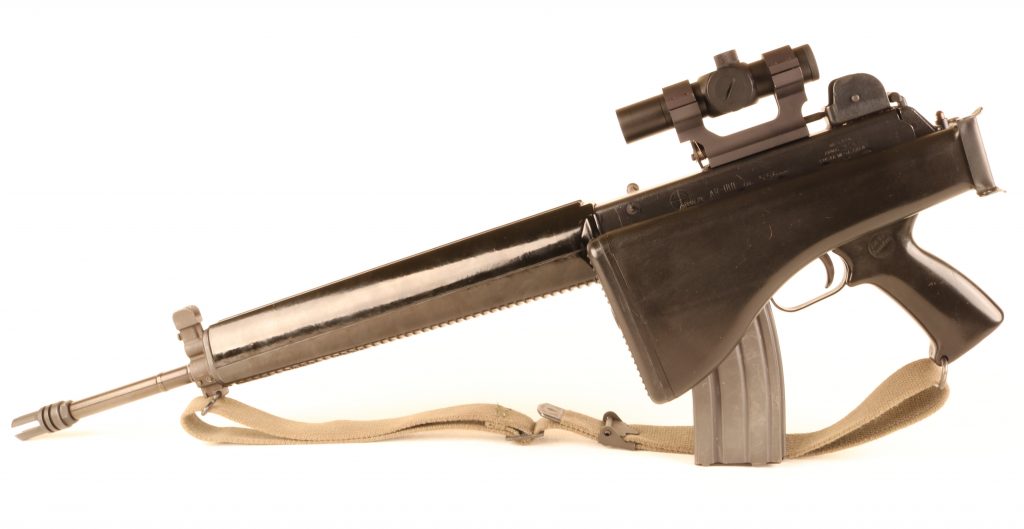
The solid buttstock of the AR180 was free to fold, as the recoil system was all contained forward in the forearm.
Range Work
Both the M16A1 and the AR-180 have barrels of similar heft. This makes them both lightweight and maneuverable guns. Recoil from the 5.56mm is piddly no matter what throws it, so both guns are comparably pleasant.
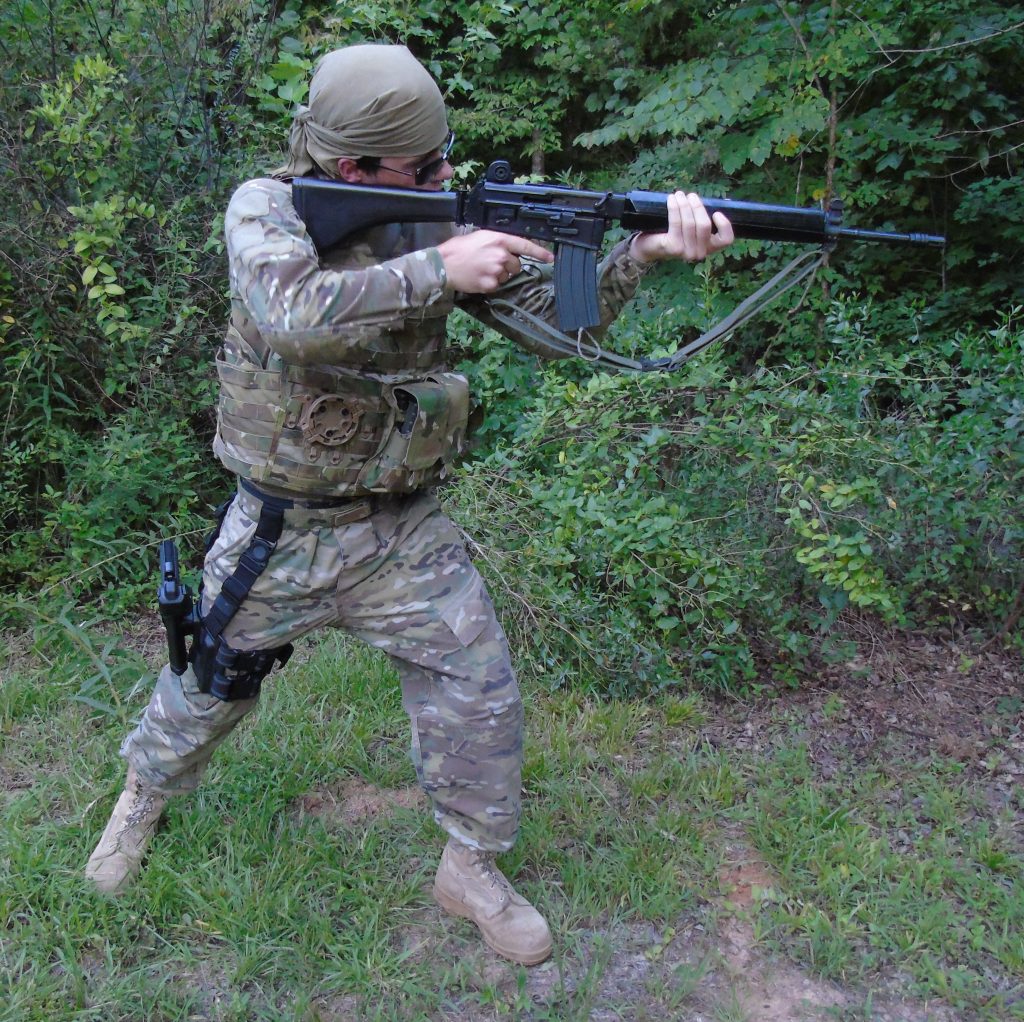
The AR-180
Performance Specifications
M16A1/AR-180
Load Velocity Group Size
Federal 55-gr. FMJ 3,144 fps/3,029 fps 2.75 in./3.2 in.
Velocity is the average of 3 rounds fired across a Caldwell ballistic Chronograph oriented 10 feet from the muzzle. Group Size is the best four of five shots measured center to center fired from a simple rest at 100 meters.
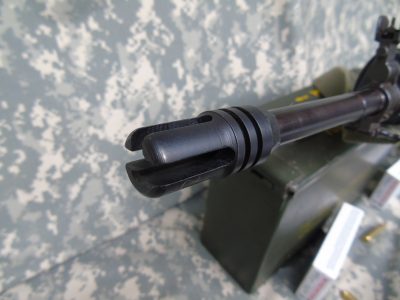
The flash suppressor on the AR180 was left open like that of the very early AR-15.
The buttstock on the M16A1 is beefier and subsequently a bit more comfortable than that of the later rifle. In these heady days of collapsing and telescoping everything, it is easy to forget how awesome that old solid M16 stock feels against your cheek. As a result, the M16A1 is slightly more manageable at longer ranges.
Both rifles are about the same length, so they both move around corners at about the same rate. The side-folding stock of the AR-180 makes for handier storage, but I can imagine no circumstance under which one might want to run the gun in this configuration. The open-tipped flash suppressor on the AR-180 grossly differs from the closed birdcage of the M16A1, but they seem comparably effective in dim light.
The real differences between these two platforms arise when you run the guns fast. My M16A1 drops its magazines freely and quickly when you stroke the magazine release. My AR-180 usually requires a little tug. Both guns lock their bolts to the rear on the last round fired.
The ergonomics for the M16 set the world standard. Refresh the magazines and slap the bolt release to get the M16 back in action. Only the Thompson submachine gun is faster. On the Tommy gun, the bolt locks back on the last round and you simply swap magazines and squeeze the trigger to get the gun running again. In the case of the AR-180 one must pull back slightly on the charging handle to release the bolt over a fresh magazine. To do so quickly inevitably involves tilting the gun slightly to improve access with the weak hand. This chore is almost as fast though incrementally more complicated than the similar drill on the M16A1.
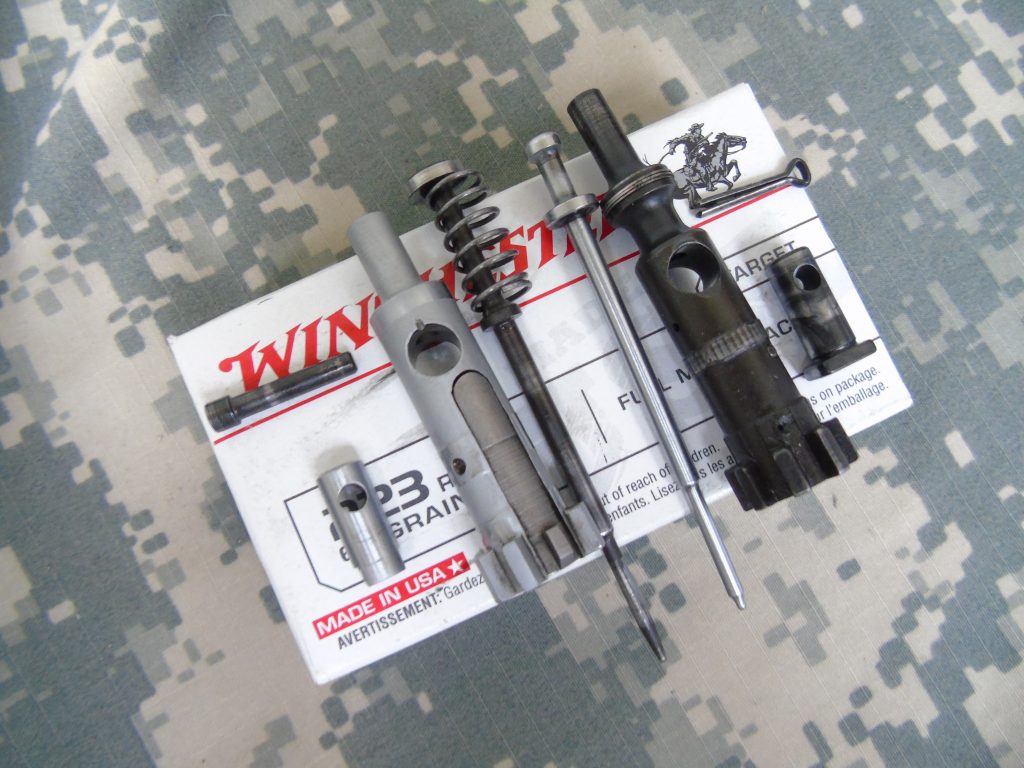
The bolt assemblies of the AR-180 and the M16A1 are similar but not interchangeable.
Parting Shots
The AR-180 was markedly easier to build than was the M16A1, and it benefitted from a generation’s worth of engineering evolution not available in 1956 when Gene and his buddies birthed the AR-10. However, in its practical respects both the M16A1 and its younger sibling the AR-180 run about the same. The personality of the two rifles is different due to the twanging recoil spring in the butt of the earlier gun, but they each throw bullets with comparable alacrity. The M16A1 is incrementally faster and incrementally more comfortable than the later gun but not by a great margin.
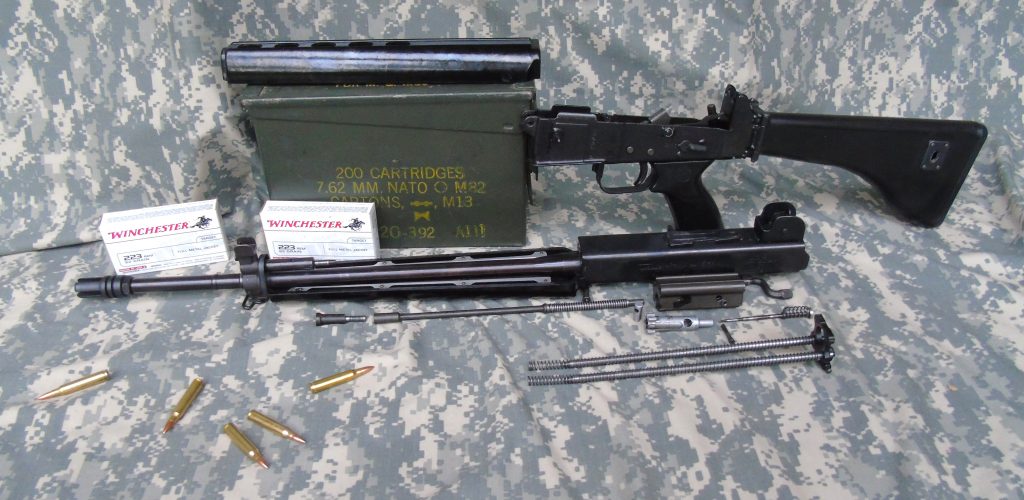
While there are distinct similarities between the entrails of the M16A1 and the subsequent AR180, differences abound.
The AR-180 never made much of a splash militarily speaking, while the M16 still soldiers on in US military service more than half a century after its conception. However, the AR180 went on to inspire the likes of the HK G36, the Steyr AUG, and the British SA80, all modern designs with plenty of combat cred. So long as each gun is shown appropriate attention with a cleaning kit they are both comparably effective tactical tools.
For more information about Federal ammunition, click here.
To purchase an AR-180 on GunsAmerica, click here.
To purchase an AR-15 on GunsAmerica, click here.
To purchase an AR-10 on GunsAmerica, click here.